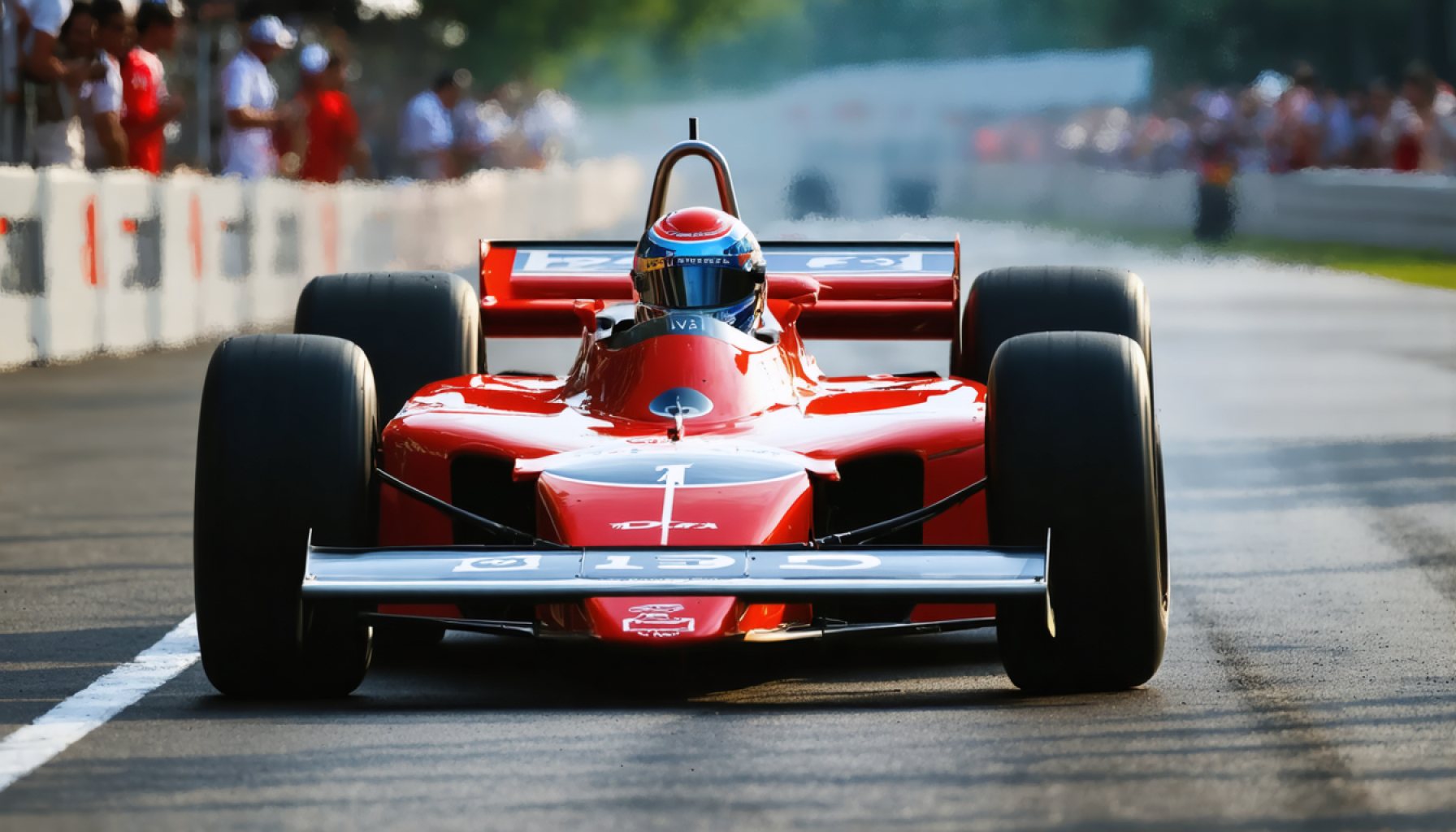- Formula 1 commemorates its 75th anniversary, celebrating its rich history and evolution.
- Ten futuristic racing machines are unveiled, showcasing cutting-edge technology and refined regulations.
- The transformation from the 1950 Alfa Romeo 158 to today’s advanced vehicles highlights innovation in speed and sustainability.
- Sleek aerodynamics, hybrid powertrains, and data analytics are pivotal in modern racing.
- Formula 1 epitomizes the continuous drive for improvement, merging man and machine in the pursuit of performance.
- The celebration in London underscores Formula 1’s blend of heritage, innovation, and the allure of speed.
Bright lights dazzle London as Formula 1 commemorates its 75th anniversary, a remarkable milestone highlighting its rich history and dazzling evolution. The spectacle takes center stage with the grand unveiling of ten futuristic racing machines, each an epitome of cutting-edge technology and refined regulations. A far cry from its humble beginnings in 1950, where the Alfa Romeo 158, driven with relentless finesse by legends like Juan Manuel Fangio, first captured the world’s imagination.
Back then, engines roared from the front of streamlined metal bodies, blurring past in a cloud of dust and adrenaline. Now, today’s machines represent the pinnacle of innovation, where speed meets sustainability, and technological leaps shift the future of racing. Sleek aerodynamics, electrifying hybrid powertrains, and sophisticated data analytics dominate the conversation, underscoring a narrative where progress bends the rules of what once seemed possible.
The transformation from Alfa’s trailblazer to the precision-engineered beasts of today isn’t just a tale of engineering prowess—it’s the essence of evolution. This incessant drive for improvement captures the spirit of Formula 1: an arena where man and machine merge, pushing boundaries and redefining the limits of human endeavor.
As fans and drivers gather under London’s scintillating skyline, the celebration serves as a reminder of Formula 1’s unyielding heartbeat—a thrilling mix of heritage, innovation, and the raw allure of speed. This journey, from past glory to future promise, leaves a resounding truth: in Formula 1, evolution is endless, fueled by passion, creativity, and the eternal human quest for the ultimate performance.
10 Must-Know Facts About Formula 1’s 75th Anniversary Celebration
How-To Steps & Life Hacks
To fully appreciate the evolution of Formula 1, consider these steps for a deeper understanding:
1. Historical Context: Start by reviewing documentaries or books on the history of Formula 1. This will provide perspective on its evolution. A recommended read is “Total Competition” by Ross Brawn and Adam Parr.
2. Technological Developments: Follow online courses or videos focusing on advancements in automotive technology. Websites like Udemy offer such courses.
3. Attend Races or Exhibitions: Nothing beats witnessing the speed and sound firsthand. Book tickets through official F1 sites such as Formula 1.
Real-World Use Cases
– Aerodynamics: The sleek designs used in Formula 1 cars have influenced modern car production, improving fuel efficiency and reducing emissions in everyday vehicles.
– Hybrid Powertrains: The development of hybrid engines within F1 has accelerated the adoption and refinement of hybrid technology in consumer vehicles.
Market Forecasts & Industry Trends
– Growing Popularity: Formula 1 is seeing a surge in popularity, particularly in North America and Asia. Reports suggest that the sport’s audience may grow by approximately 10% annually.
– Sustainability Trends: F1 is pushing for sustainability with goals to reach a net-zero carbon footprint by 2030. This includes using sustainable fuels from 2026.
Reviews & Comparisons
Comparing today’s F1 machines to the past:
– Speed & Agility: Today’s cars like the Mercedes-AMG F1 W12 are significantly faster, offering unparalleled speed and precision.
– Safety Features: From halo devices to improved crash barriers, F1 has made huge strides in driver safety.
Controversies & Limitations
– Cost Cap Debate: Ongoing discussions about budget caps aim to level the playing field but face resistance from larger, well-funded teams.
– Environmental Concerns: Despite efforts toward sustainability, the sport still faces criticism for its high carbon footprint.
Features, Specs & Pricing
– Specs: Modern F1 cars can reach speeds over 220 mph, powered by hybrid engines producing more than 1000 horsepower.
– Pricing: Estimated cost for an F1 car can exceed $10 million, excluding R&D costs.
Security & Sustainability
– Enhanced Security: Biometric steering wheels and other innovations are improving driver safety.
– Sustainable Practices: F1’s shift toward biofuels and electric powertrains embodies a commitment to reducing environmental impact.
Insights & Predictions
Experts predict that by 2030, we might see fully electric F1 cars if technology and regulatory frameworks continue to evolve favorably.
Tutorials & Compatibility
– Simulator Training: With advancements in technology, F1 simulators have become accurate training tools for drivers. Simulators like iRacing or F1 2023 offer realistic experiences for enthusiasts at home.
Pros & Cons Overview
Pros:
– Pioneering technology and innovation
– Heightened global fan engagement
– Improved safety measures
Cons:
– High environmental impact
– Elevated costs limiting entry for smaller teams
Actionable Recommendations
– Engage with Online Communities: Join forums like Reddit’s r/formula1 for discussions and news.
– Stay Informed: Use official apps and social media channels for updates.
– Sustainability Initiatives: Support brands and teams focused on sustainability to encourage the F1 industry’s eco-friendly transition.
Formula 1 continues to break boundaries, capturing imaginations worldwide. This celebration isn’t just about cars—it’s about the relentless pursuit of excellence. Stay informed, engaged, and inspired by this thrilling sport’s ongoing revolution!
For more about the latest in Formula 1, visit the official Formula 1.
